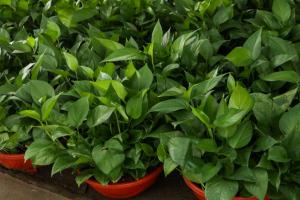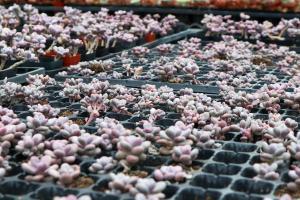Can you re-pot plants in the winter?
Winter is not the ideal time to re-pot plants but it can be done successfully. However, there are some things that you need to keep in mind before you decide to re-pot your plants in the winter.
Choose the right plants to re-pot
Not all plants can handle a winter re-pot. Some plants are sensitive to changes in their environment and prefer to stay in their original pots throughout the colder months. Before starting, make sure you know the needs of the particular plant you want to re-pot. Avoid re-potting plants that are in flower or about to flower, since this may damage the root system and may cause the plant to die. Winter is also not a good time to re-pot plants that are not in active growth, since there is a greater risk of rodent damage, and it is harder to protect the plants from moisture and cold weather.
Choose the right potting mix
Potting mix that is too heavy with a lot of soil content can cause problems with drainage and may hold too much water, potentially drowning the roots of your plants. On the other hand, a potting mix that is too light and not nutrient-rich will not provide your plants with the right mix of nutrients that they need. Be sure to choose the right potting mix for the particular plant and the conditions it is growing in. You can also add organic matter like compost, worm castings or peat moss to the soil to encourage growth and provide the correct moisture levels.
Timing is key
Timing is crucial when it comes to re-potting plants in the winter. Re-potting should be done during the warmest part of the day to avoid shocks to the plant’s system. Avoid working with plants when it is very cold or when the soil is frozen or soggy from rain or snow. It is best to re-pot plants in mid-winter or early spring when the days are getting longer and the temperatures are slowly rising. This gives the plants an opportunity to recover before the hot summer months.
Prepare the plant for re-potting
Before re-potting, remove any dead or yellowing leaves, and loosen the soil around the roots gently. This will help reduce the shock when the plant is transplanted. Remove the plant from its pot carefully to avoid damaging the root structure. If the roots are matted, loosen them gently using a fork or by running water through them. Trim any damaged or rotten roots, but leave as much healthy root as possible.
After re-potting care
After re-potting, water the plant well and allow it to drain before returning it to its spot. Be sure to keep the plant in a place with good lighting where it is protected from cold drafts. Avoid overwatering newly re-potted plants. Water only when the soil is dry to the touch, and make sure it is not watered too much, as this can drown the plant. Monitor the plant closely and if there are problems, seek professional help. Remember, patience and care are essential for the success of any winter re-potting effort.
Conclusion
Winter may not be the ideal time to re-pot plants, but it can be done successfully if you follow these guidelines. Choose the right plants, potting mix, and timing, prepare the plant for transplantation, and provide after re-potting care. With the right approach and care, your plants can thrive and grow even in the colder months.

 how many times do yo...
how many times do yo... how many planted tre...
how many planted tre... how many pine trees ...
how many pine trees ... how many pecan trees...
how many pecan trees... how many plants comp...
how many plants comp... how many plants can ...
how many plants can ... how many plants and ...
how many plants and ... how many pepper plan...
how many pepper plan...
































